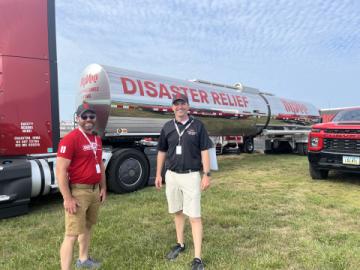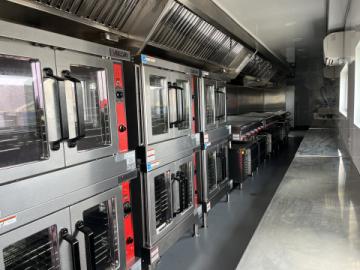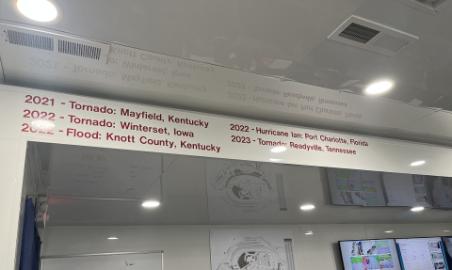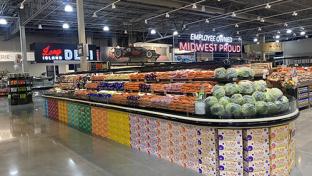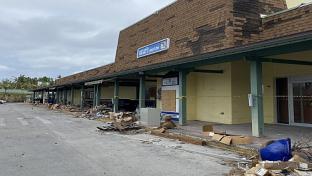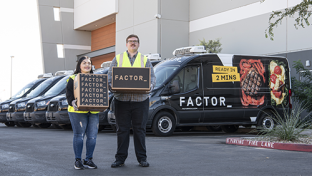EXCLUSIVE: How Hy-Vee Rolls Out in the Face of Disaster
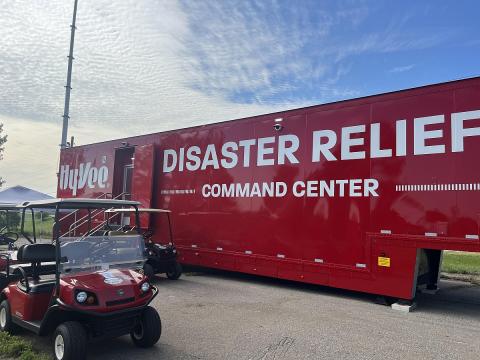
During the same week that winds from nearby Hurricane Dora fueled deadly wildfires in Maui, weather experts at the Washington, D.C.-based National Oceanic and Atmospheric Administration’s (NOAA) Climate Prediction Center projected an above-normal hurricane season for the rest of 2023. Meanwhile, in the nation’s heartland, Cole Bisgard and his team at Hy-Vee are quietly and steadfastly monitoring situations where they can step in and help during the next crisis.
Bisgard, Hy-Vee’s assistant director of business continuity and disaster relief, is a lead organizer of the company’s disaster relief fleet. That fleet was created in August 2020, when an extreme storm and wind event called a derecho roared through the grocer’s home state and destroyed homes, crops and parts of communities.
[Read more: “EXCLUSIVE: Hy-Vee Takes the Lead at INDYCAR Race Weekend”]
This summer, the team and its vehicles traveled to Springfield, Ill., where another high wind event wreaked local havoc, and to Lenexa, Kansas, an area hit by severe storms. Hy-Vee’s resources were used to provide meals to first responders and utility workers and to power up local stores, among other forms of assistance.
As a chronicle – and a reminder – of the impact of the program, the interior of the mobile command center includes a list of all of the places the vehicle has traveled, including the site of a tornado in Mayfield, Ky., in 2021, a twister in Winterset, Iowa, in 2022 and flooded areas of Knott County in Kentucky last year. “We've had 20 deployments in 20 months,” reported Bisgard.
During an exclusive tour of the disaster relief fleet on display at the Hy-Vee-sponsored INDYCAR Race Weekend in Newton, Iowa in July, Bisgard talked about the planning that goes into such relief efforts.
“Our command center really helps us be Hy-Vee anywhere,” he explained, citing last year’s trip to the Florida Suncoast region slammed by Hurricane Ian. “So if I am five miles away from a store like I am right now, or if I am 700 miles away in Port Charlotte, Fla., I can organize and have resources available to protect my team and serve communities at the same time.”
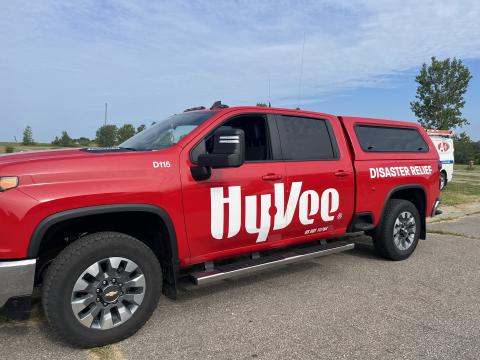
Hy-Vee acquired and modified the trailer into the command center that is now affectionately called “Big Red.” The grocer's fleet includes other vehicles painted Hy-Vee red and outfitted to supply power and supplies to those in need, including several trucks called “Raptors” with generators and sophisticated satellite communications equipment, a trailer with ovens and cooktops used to prepare large-scale meals, a mobile pharmacy stocked with medications and other health supplies, a potable water tank semi-trailer and potable water pump trailer.
The fleet also features a muster station where associates and volunteers can meet and receive tasks and updates. The command center includes a bank of screens with real-time information ranging from weather radar maps to flight paths to security camera images. An onsite kitchenette supplies food and water for the team, and a bunk trailer with beds can be part of the convoy, too.
Hy-Vee taps into its retail expertise to provide support and staff for the fleet. “We have security, pharmacy, management, food safety, site logistics and food preparation,” Bisgard said, sharing examples of involved company functions. Hy-Vee’s executive leaders, including CEO Jeremy Gosch and executive chairman of the board Randy Edeker, have been instrumental in getting the program off the ground, Bisgard added.
That sentiment is echoed by Jamie Sipes, SVP and chief enterprise security officer at Hy-Vee. “The support level of the executives is just amazing. With security and disaster relief strategies, when messaging is emphasized from the top down, you don’t have to sell it,” he told Progressive Grocer, adding, “Hy-Vee prides itself as a company of purpose and it is demonstrated through all of the work we do in disaster relief. It’s not just for our communities but nationally and really globally – finding ways to give back.”
In addition to leveraging its in-house talent and resources, Hy-Vee often loops in suppliers for aid. “In Port Charlotte, we took truckloads of ice and truckloads of water and two truckloads of fresh pork that we partnered with Hormel to get through,” recalled Bisgard. The pork was used to make barbecue meals for first responders and others during the hurricane recovery and initial cleanup.
Throughout the year, the fleet and its systems are carefully monitored. “We always work to maintain it in a state of readiness, so that we can rock and roll,” shared Bisgard. “It’s not like disasters give you a lot of forewarning, except for maybe a hurricane.”
When the decision is made to send out the fleet, the Hy-Vee crew works with local officials on specifics of the assistance. “We don’t just self-deploy – we make sure that we have a spot there. We want to help complement and don’t want to be a strain,” explained Bisgard, stressing the fine line between having to travel to the site of a disaster and working out the logistics during hectic search-and-rescue phases. “There are so many things moving at once.”
Ultimately, people affected by disasters are grateful for help during a time of crisis. “We’ve had so many stories. Some have said they saw the trailer with the Hy-Vee name, and it was a sense of home, of where they grew up. And they just lost it,” shared Bisgard, adding, “It’s all part of the greater good.”
Employee-owned Hy-Vee operates more than 285 retail stores across eight Midwestern states, with sales of more than $13 billion annually. The West Des Moines, Iowa-based company has a team of more than 80,000 employees and is No. 36 on The PG 100, Progressive Grocer’s 2023 list of the top food and consumables retailers in North America. PG also named Hy-Vee a 2023 Top Regional.


